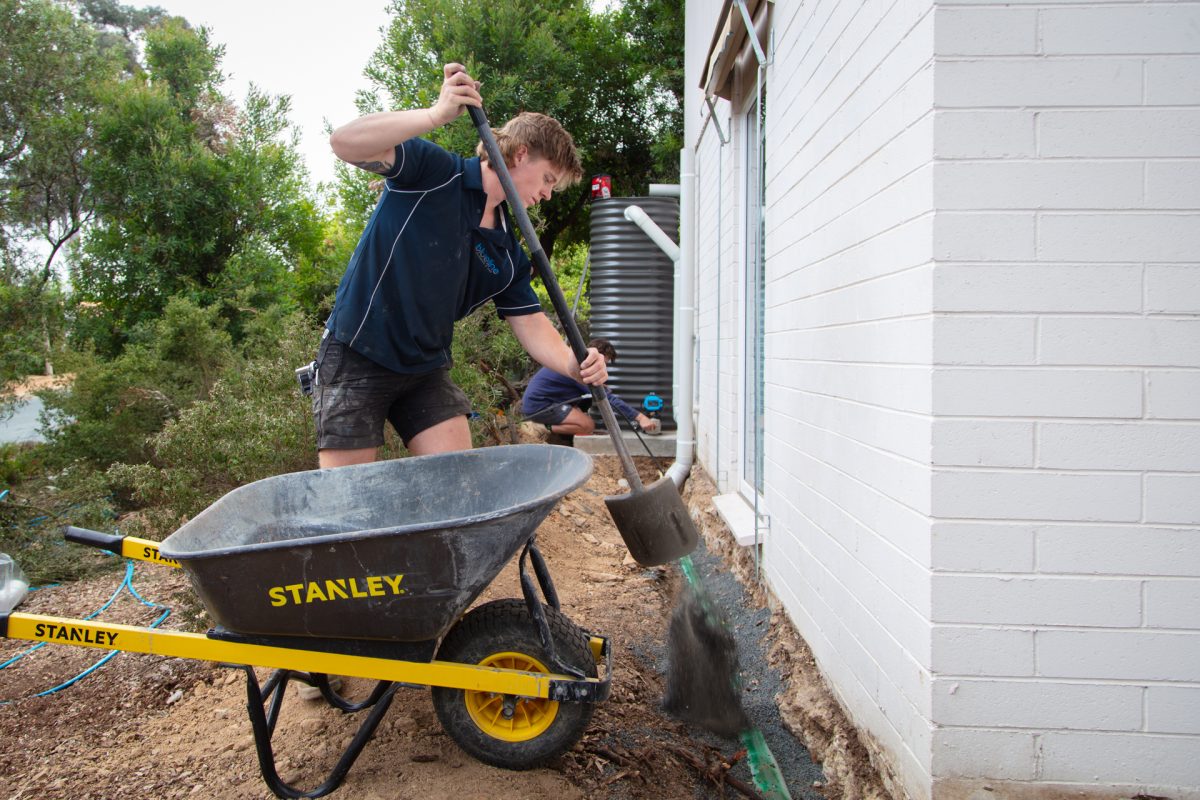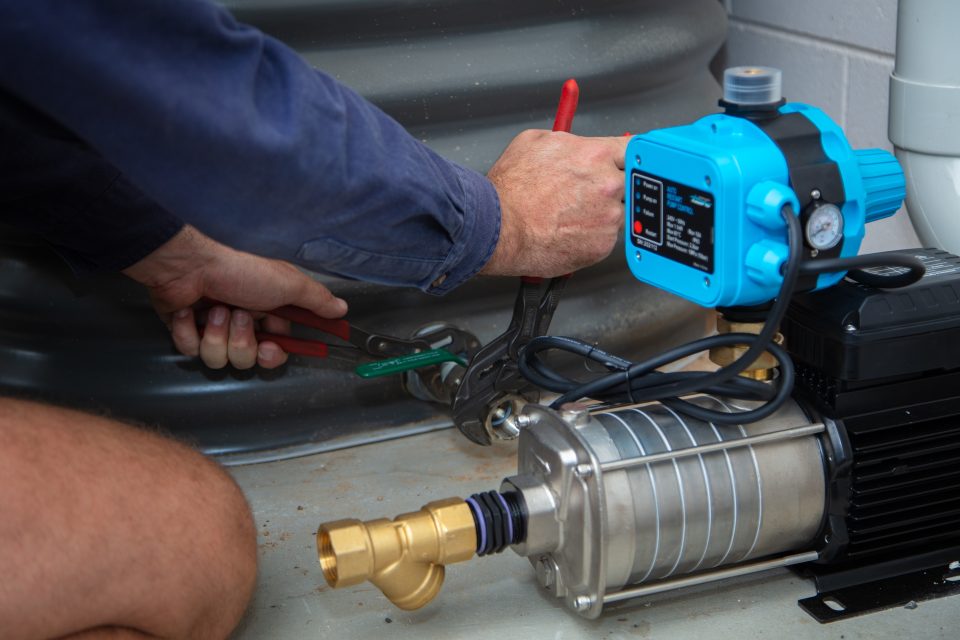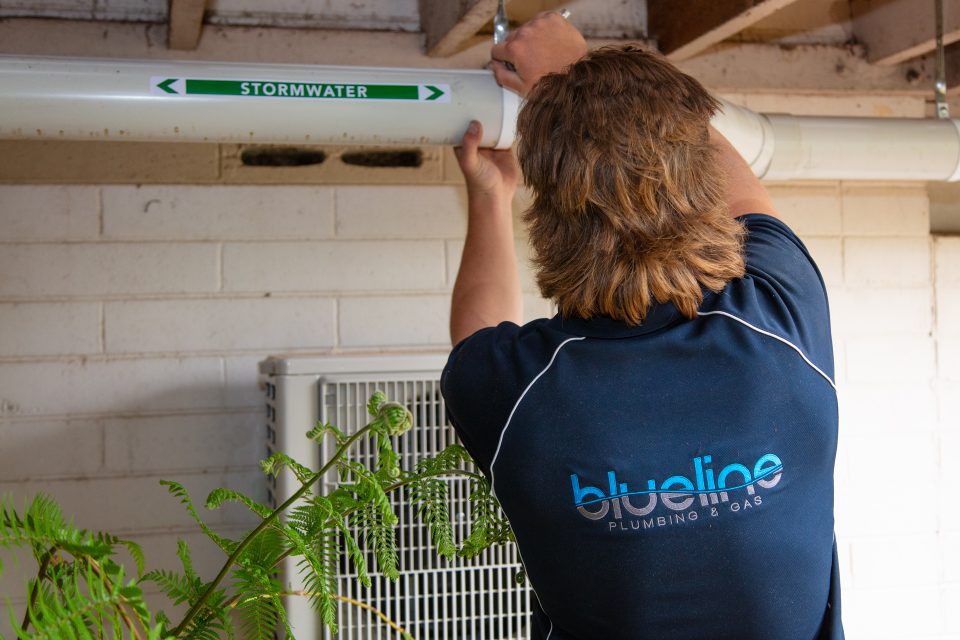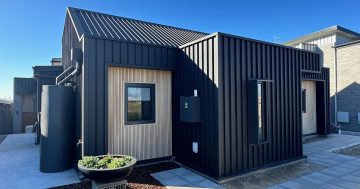
The installation of a water tank may be more complicated and costly than you expect, but it’s still a good investment. Photo: Thomas Lucraft.
There are a few good reasons to install a rainwater tank, but saving money is not one of them according to a local expert.
Blueline Plumbing & Gas owner Anthony Butler says while rainwater tanks are a great thing to add, it’s not necessarily a cheap exercise – so you have to be doing it for the right reasons.
While a tank itself is not expensive, installing a base, connecting downpipes, pumps and labour all add up. Depending on what you want, it could cost anywhere from $3000 to $4000 for something very basic, up to $15,000 or $20,000 for complex units.
“Setting up a rainwater tank often costs more than people realise, whereas water is, relatively speaking, very cheap,” Anthony says.
“Over 10 or 15 years, maintenance and replacement parts notwithstanding, you might break even or save a bit of money; but in my view, people shouldn’t put tanks in to save money. Instead, they should see a rainwater tank as an environmentally friendly investment.”
While rainwater tanks can be expensive, they remain a good investment, particularly if you’re environmentally minded or an avid gardener.
Now is the time many people are thinking about it, too. With El Nino and a hot dry summer predicted, rainwater tank requests at Blueline have roughly quadrupled in the past six months.
There are lots of factors and options to consider, but Anthony always starts with the same question: why do you want a rainwater tank?
“It’s important to know because that will help inform which options are most suitable,” he says.
“A lot of it is situational and predetermined by your home. But if you know what’s most important to you – whether it’s water to use in the garden, just for flushing toilets, or for water to the entire home – these questions help to determine which set-up will be right for you.”





This is because of how rainwater tanks work. Tanks are generally rigged up to capture rainwater runoff from the roof of your home in downpipes that feed it.
If you know what you’re using the water for, you can look at factors such as the area of your rooftop (the more roof space, the more water there will be to capture) and work out the size of the tank needed.
From there, it’s a case of how best to capture the water, what pipes will need to be connected and the best spot for the tank.
“You might want your rainwater tank near the shed because aesthetically that’s best. But sheds generally don’t have adequate roof space. That’s why most rainwater tanks are connected to one or two downpipes from the back of the house,” Anthony says.
“Other times if the house isn’t on a concrete slab we can connect all downpipes on a ‘charged’ system that will allow you to collect water from all of your downpipes, maximising the amount of water you can capture, store and use.”
Local weather patterns also factor in. Anthony says in Canberra which, with the exception of the past few years, generally has seasons of heavy downpours followed by multiple rain-free months, bigger is generally better.
“If you have a period of wet weather and only a small tank, the tank will overflow quite quickly and send a lot of potential stored water straight down the drain. You are then likely to use up the stored water quite quickly and need to start using mains water which certainly isn’t ideal,” he says.
“If you’re going to the trouble and expense of installing a rainwater tank, you want to select the size that will give you the optimal value and functionality.”
That said, a small tank can still be the ticket, depending on your expectations. If you hook a small tank up to all your toilets and irrigation, it won’t last long. But in other scenarios – such as tending to the needs of a small courtyard – they’re perfect.
“The main benefit as I see for rainwater tanks is for use in the garden. Plants love rainwater more than water from taps because it’s not treated and contains more minerals,” Anthony says.
“It’s a no-no to water your garden in times of drought unless it’s from a tank. Rather than letting any precious rainwater flow down the stormwater drains, why not capture it and use it? If that’s your thinking, you’re on the right track.”
For a consultation and quote on your rainwater tank, contact Blueline Plumbing & Gas or visit its Rainwater Tank Installation webpage to learn more.





















